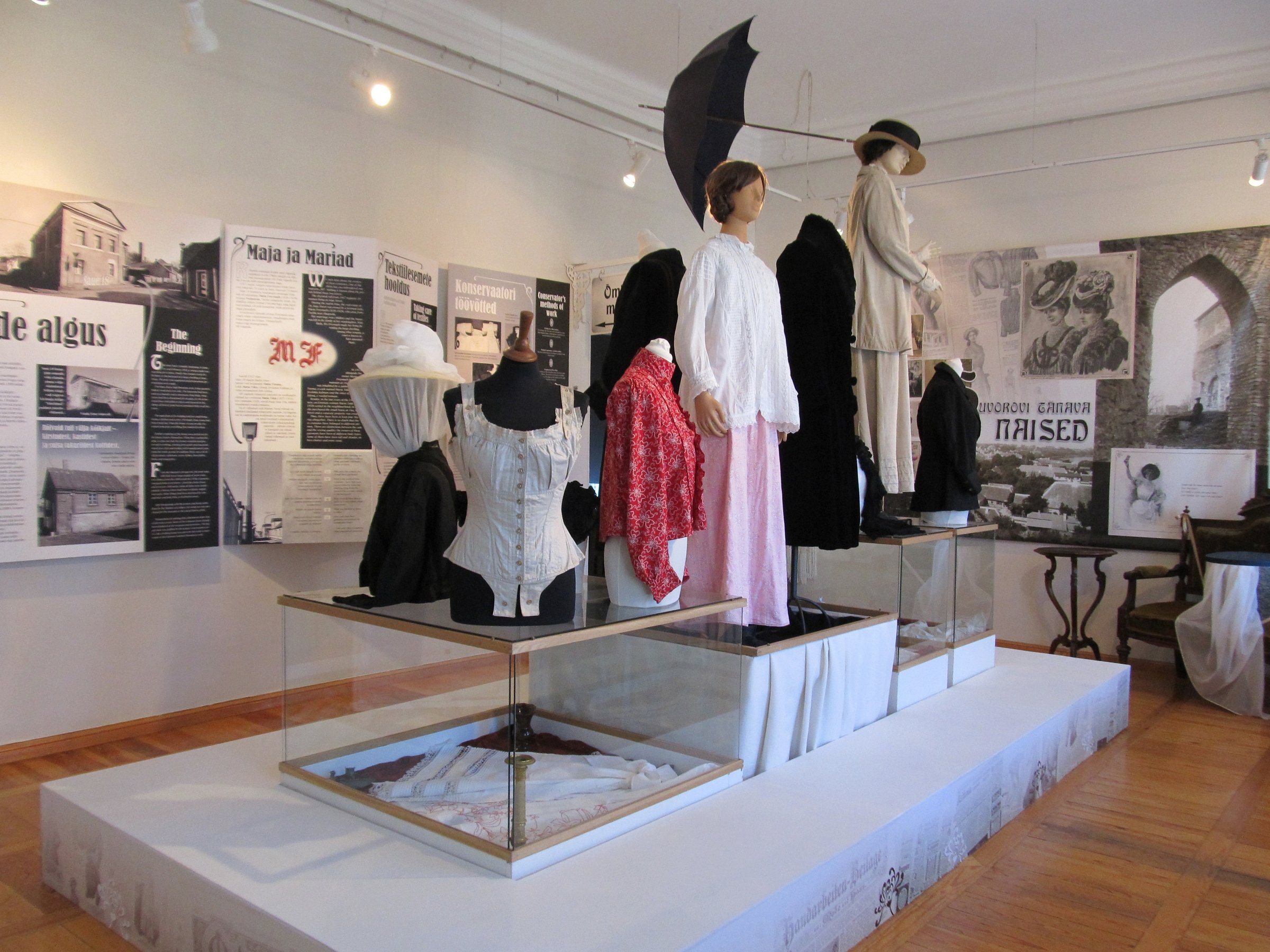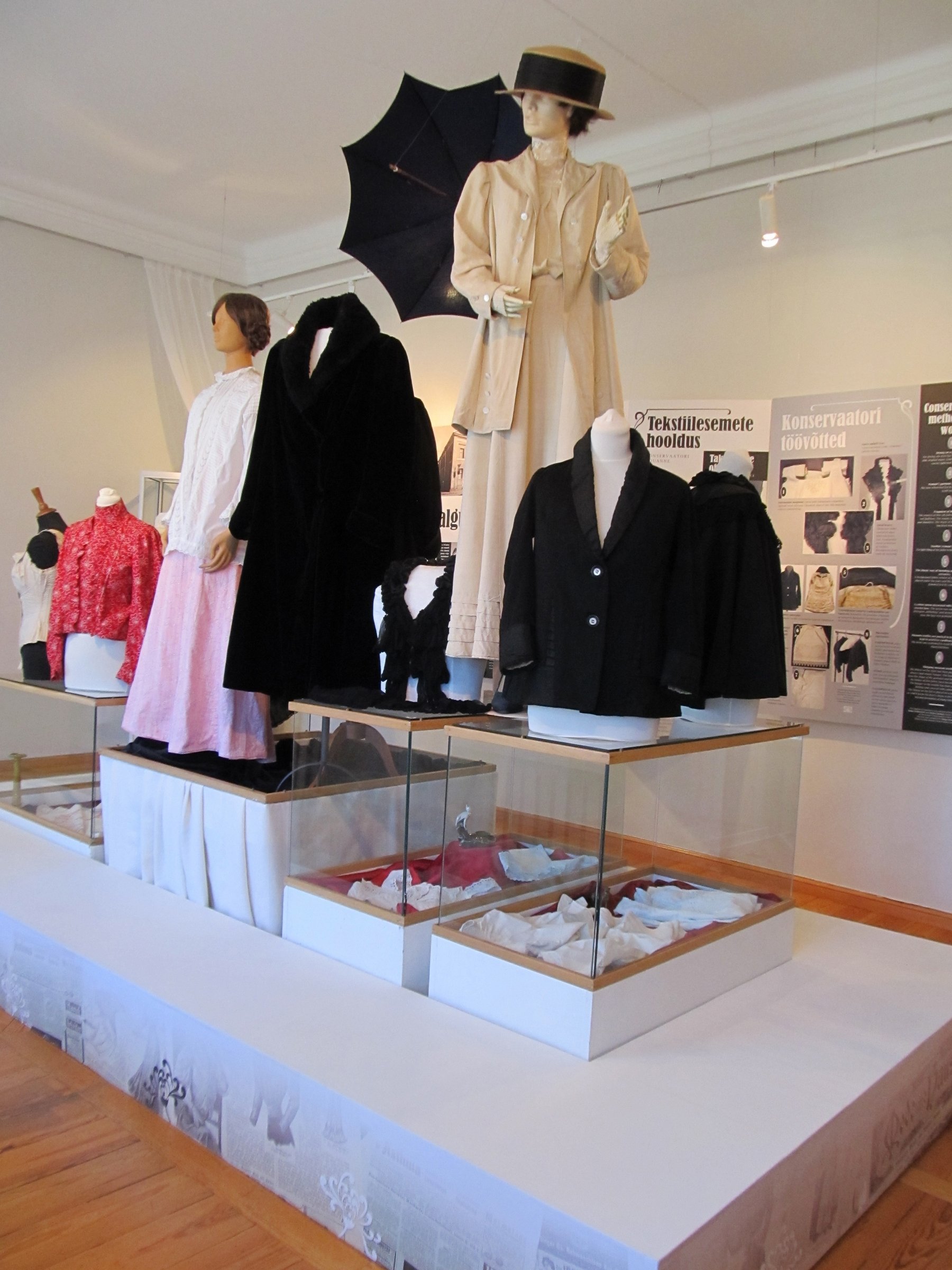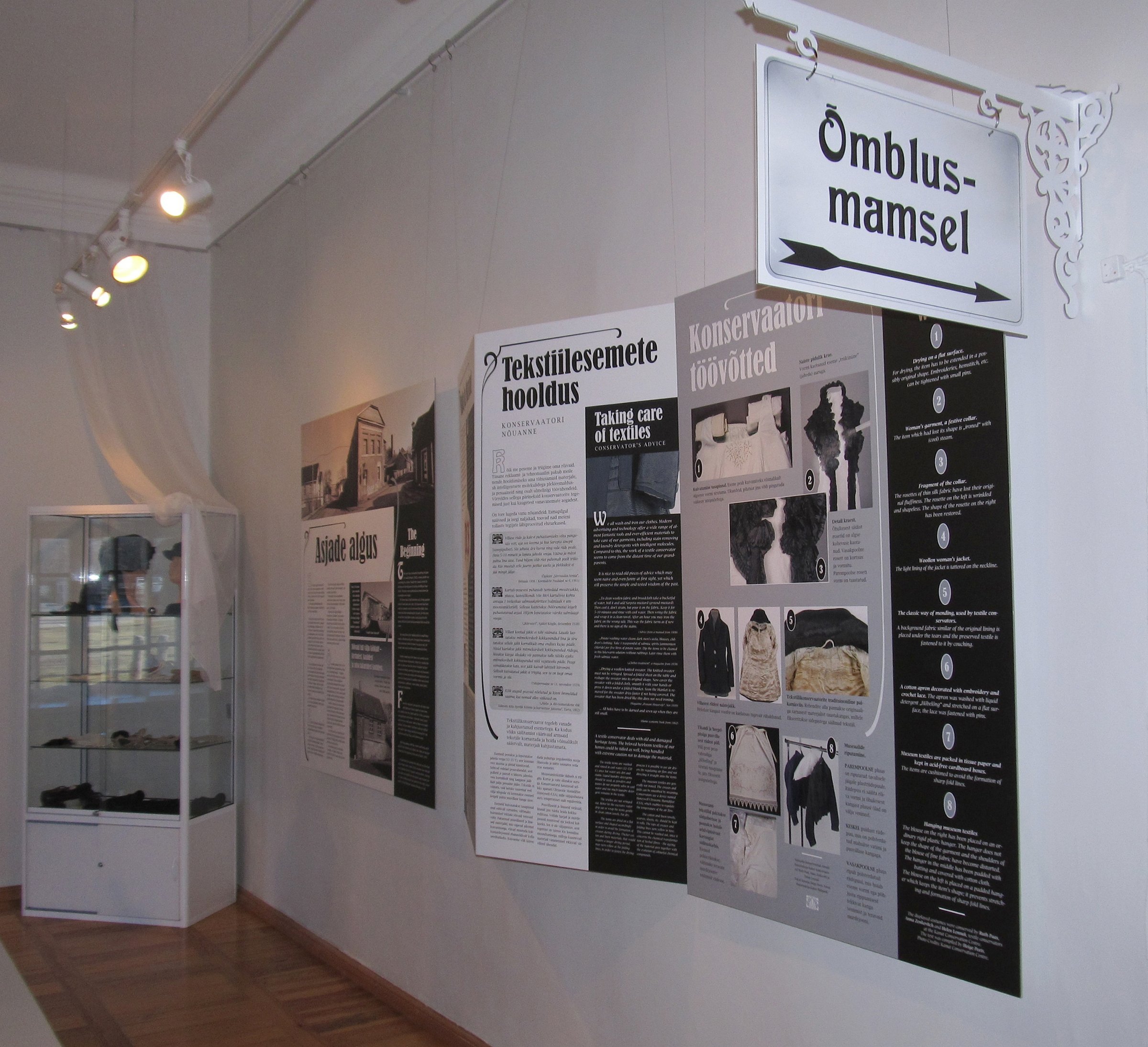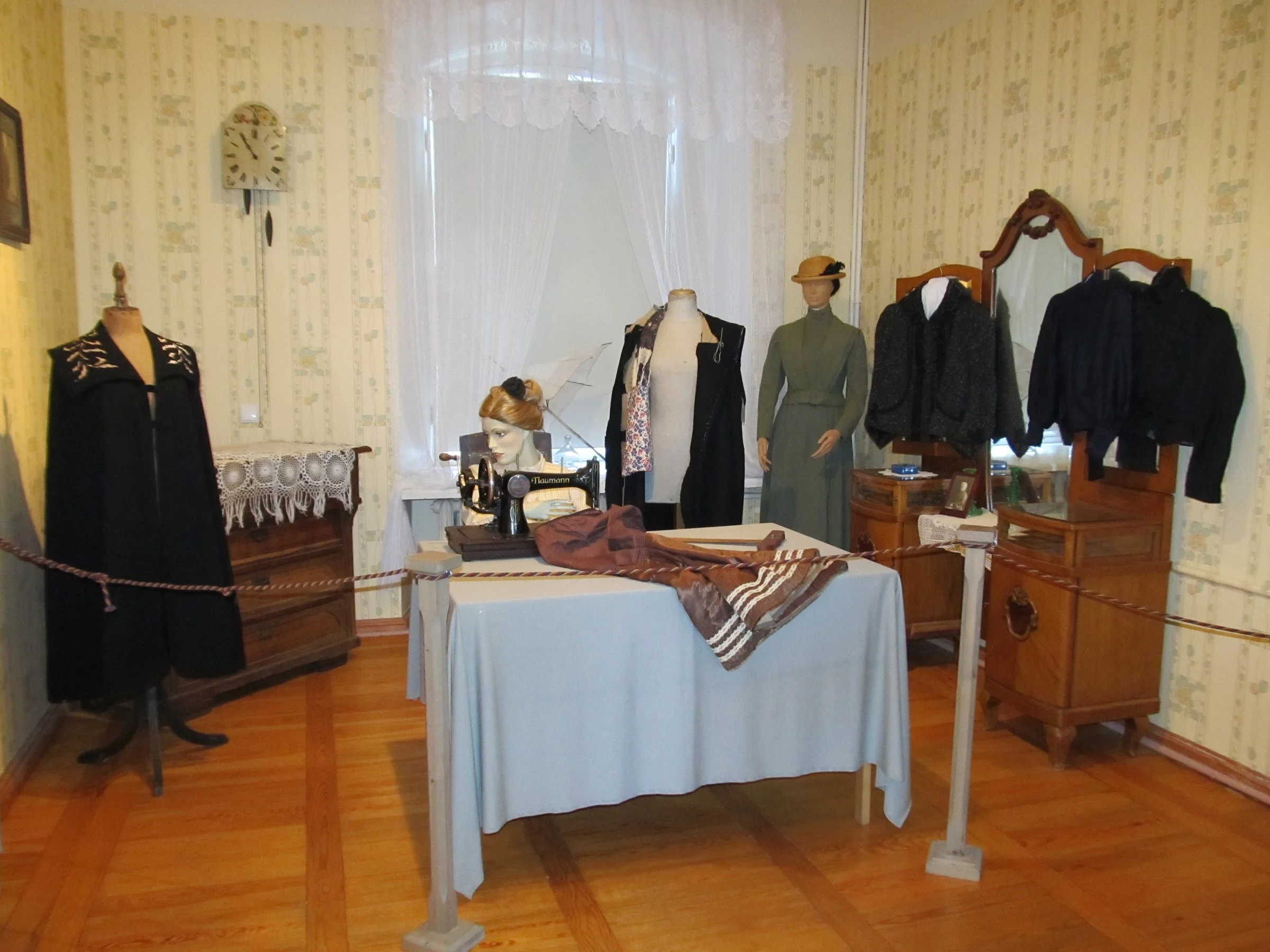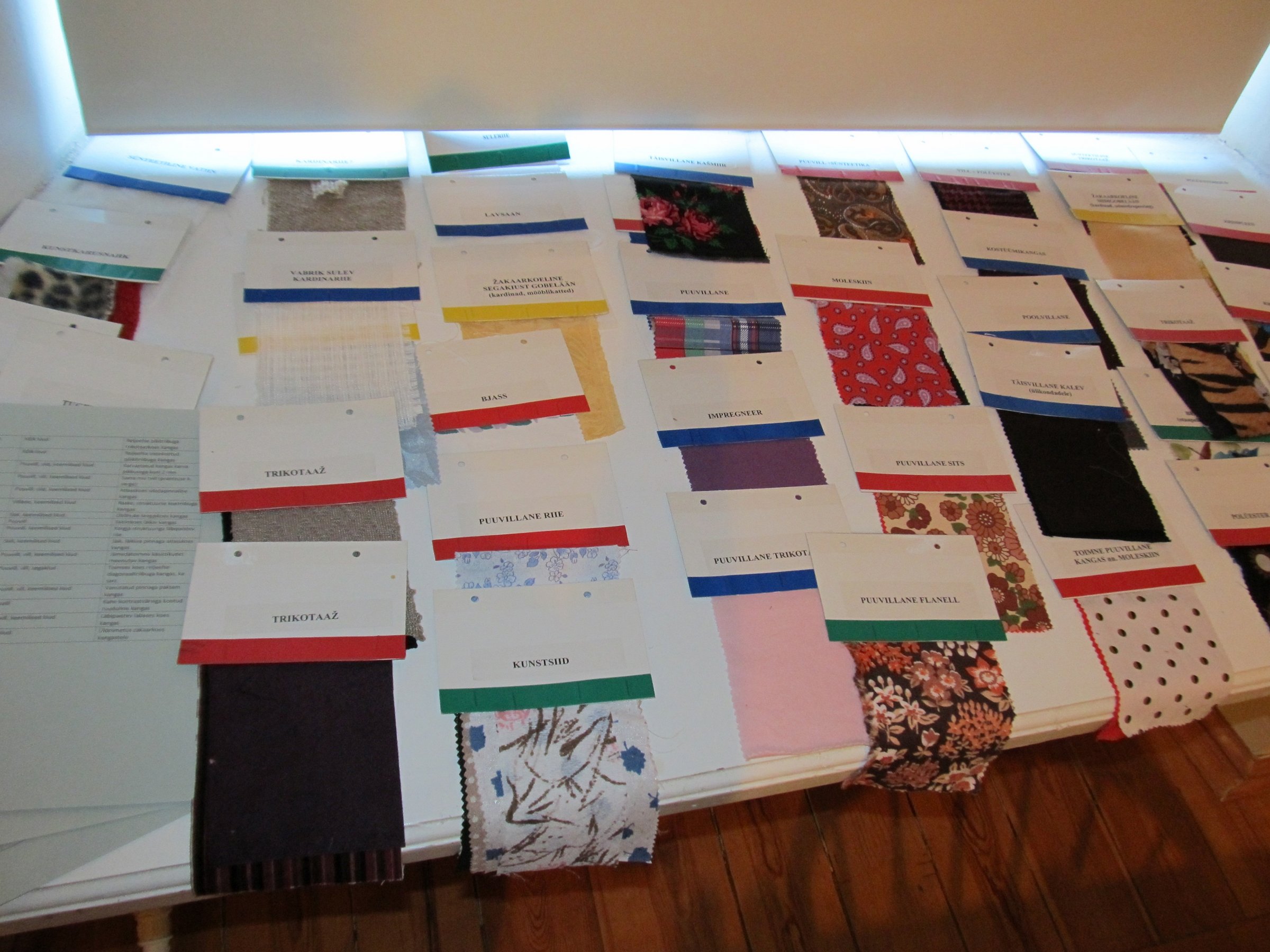THREEFOLD ROMANCE. THE STORY OF THE EXHIBITION WOMEN FROM SUVOROV STREET
Autor:
Eve Otstavel
Year:
Anno 2015
Category:
Preservation
Sometimes an exhibition is born of a row of romantic coincidences. This happened to the exhibition Women from Suvorov Street, in which case we can speak even of a triplicate romance.
ROMANCE 1 – THE STORY OF A MYSTERIOUS FIND
This story began in 2002, when a young couple was looking for a home. They found a suitable small house in the old town of Haapsalu. The negotiations of the purchase were being held and the house had already been emptied until only the attic was still untouched. There it turned out that the former owners had been true hoarders, they had stored whatever – grain, old pieces of furniture, dishes, clothes, books and journals.Serendipity! These things were not immediately taken to the dump and thanks to the local national heritage inspector a part of the finds were taken to the museum. The best find for the museum were women’s clothes from the 1880s up to the 1950s.
ROMANCE 2 – A FEMININE AND BEAUTIFUL ERA
The clothes were all over the attic – in chests, boxes and bags. Among the 93 items that were discovered, women’s garb and accessories from the period before the First World War dominated. This peaceful period at the beginning of the previous century before the war has been called Belle Époque. True, the find does not contain any creations of Paris or other famous fashion houses but it is still quite a worthy representative of clothes of the time. It is just thanks to its compactness that makes the collection valuable – no other museum in Estonia could present the 19th-20th-century clothes found in one location. Museums have mostly collected national costumes and not paid much attention to urban garb even when it is known that town fashions had a definite influence on rural dressing culture.
Our find has belonged to women of different backgrounds – there are noticeable differences in the choice of material and the quality of sewing. There are expensive well-tailored items and others that are plainer and cheaper and obviously made by less experienced seamstresses. Some items have been well worn, then repaired and remade; some others have not been worn for a long time. The items also allow us to make conclusions about the height and figures of the wearers. Some of the clothes have belonged to a tall slim woman, others to a short plump one.
It is quite exciting that we have managed to ascertain the owner of some of the clothes. Several of them bear the initials MF. These are evidently the initials of a German woman Maria Freymuth, the owner of the main house at 18, Saue Street. She must have rented out her big house to support herself. In 1917 three more Marias lived in the house – they were the janitor Maria Tooma, the cook Maria Toks and Maria Takk.
ROMANCE 3 – A SENSITIVE AND IMAGINATIVE DESIGN
The idea to make up an exhibition was born immediately when the clothes were discovered in the attic. Although the items were not in too bad condition, cleaning and partly repairing them took time. The museum was preparing for the exhibition for several years. 60 items of the big collection have been displayed. The title of the exhibition Women from Suvorov Street was decided upon pretty soon. The organisers wished that the title should reflect both the period and the local milieu, that is a small town with somewhat German mentality in the conditions of Russianisation. The latter means that the house where the clothes were found is today on the crossroads, in Saue Street, where once Suvorov Street began. Thus the name of the street allowed to point at the conditions under tsarist rule before the First World War. Separate topics developed and were selected one by one. They were the story of the collection, a background survey that gave information about the period and its fashion and then a presentation of how garments were made and about the makers – tailors and seamstresses. The idea to show what the conservators’ work is like was also approved.
Two rooms were provided for the display, the bigger hall was for the garments and information concerning garb. The biggest problem was how to keep the visitors at a safe distance from the textiles without raising barriers that, more often than not, start dominating the display. The designer’s idea to put the mannequins on higher platforms provided the necessary distance and a new dimension. The space below the mannequins could be used for displaying smaller items like aprons, bodices and underwear. Information was placed on the walls under the titles Story of the house, The house and Marias, Vanity Fair, Dressing in beautiful clothes, Romance of old things, Conservation of textiles. The photos were provided by the museum’s own photo collection and the fashion magazine Mode und Haus from the late 19th and early 20th centuries. The graphic solution was made whole by motifs of Art Deco. In the workroom of a seamstress we could see her sitting at her sewing machine, unfinished work all around her. Seamstress’s implements as well as the first sewing machines, one from a very early period, using only one thread, were placed in a showcase. To give the visitors a chance to try working at such a sewing machine, the museum bought a cheap over-a-hundred-year old Naumann machine. The room was also provided with the so-called fabric-ABC-book. We decided to show the visitors various types of fabrics to give them some additional knowledge in addition to today’s muslin and batiste. Old clothes urge us inspect and touch them, that is, why a replica of an early-20th-century blouse was made available.
The exhibition was awarded the prize The brightest cultural event in Haapsalu in 2014 in February 2015. This was the best appreciation for the organisers.
Curator – Eve Otstavel
Designer – Anneliis Aunapuu
Partners – Textile department of the Haapsalu Vocational Training Centre, fashion designer Kai Saar and Foundation EVM Conservation and Digitising Centre Kanut
Texts – Eve Otstavel (Story of the house, The house and Marias, Vanity Fair, Dressing in beautiful clothes); Marju Heldema (Tools of a seamstress, Vanity Fair, Dressing in beautiful clothes); Kai Saar (Romance of the old things) and Heige Peets (Conservation of textiles).
Conservators of the Foundation EVM Conservation and Digitising Centre Kanut and the Estonian National Museum made the items displayable.
Location – Haapsalu Town Hall, at 2, Kooli Street
Open – 16 May 2014 – 30 September 2015

